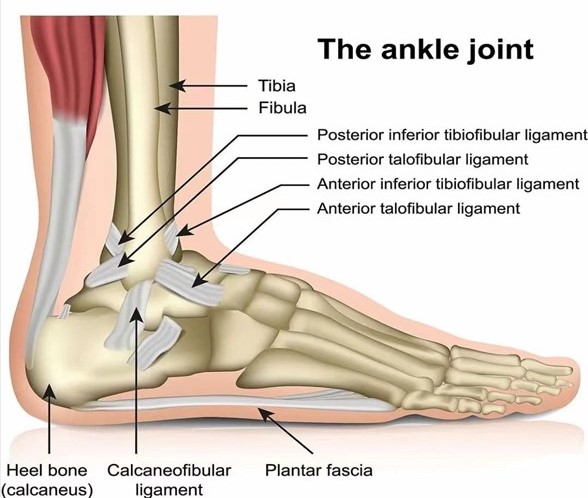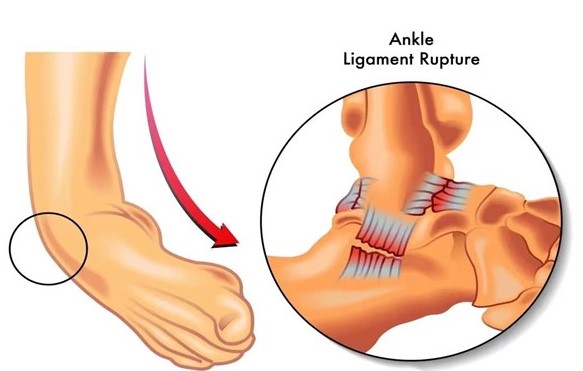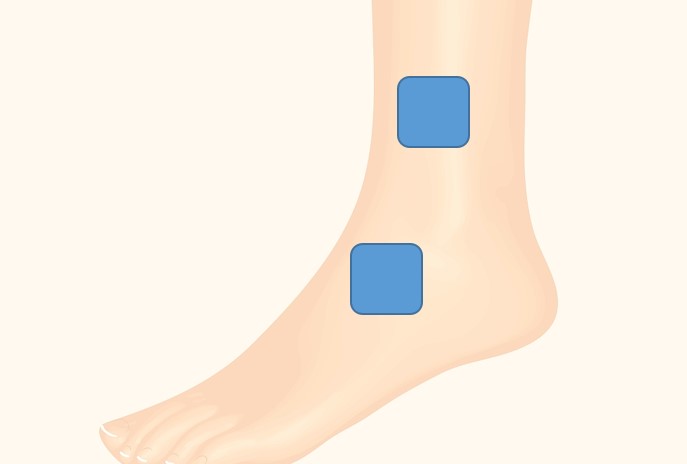what is Ankle sprain?
Ankle sprain is a common condition in clinics, with the highest incidence among joint and ligament injuries. The ankle joint, being the body's primary weight-bearing joint closest to the ground, plays a crucial role in daily activities and sports. Ligament injuries associated with ankle sprains include those affecting the anterior talofibular ligament, calcaneofibular ligament of the external ankle, medial malleolar deltoid ligament, and inferior tibiofibular transverse ligament.

Symptoms
The clinical manifestations of an ankle sprain include immediate pain and swelling at the site, followed by skin discoloration. Severe cases may result in immobility due to pain and swelling. In a lateral ankle sprain, increased pain is felt during varus movement. When the medial deltoid ligament is injured, attempting foot valgus causes increased pain symptoms. Rest may alleviate pain and swelling, but loose ligaments can lead to ankle instability and repeated sprains.

Diagnosis
★Medical history
The patient had acute or chronic ankle sprains, primary sprains, or recurrent sprains.
★Sign
The symptoms of patients who have just sprained their ankle are usually worse, with a lot of pain and swelling, the ankle may even be dislocated, there might be a slight inward tilt of the ankle, and you can feel tender spots on the outside ligament of the ankle.
★Imaging examination
The ankle should first be examined with anteroposterior and lateral X-rays to rule out a fracture. MRI can then be used to further assess ligament, joint capsule, and articular cartilage injuries. The location and severity of the ankle sprain are determined based on physical signs and imaging.
How to treat Tennis elbow with electrotherapy products?
The specific use method is as follows(TENS mode):
①Determine the right amount of current: Adjust the current strength of the TENS electrotherapy device based on how much pain you feel and what feels comfortable for you. Generally, start with a low intensity and gradually increase it until you feel a pleasant sensation.
②Placement of electrodes: Put the TENS electrode patches on or near the area that hurts. For ankle sprain, you can place them on the muscles around your ankle or directly over where it hurts. Make sure to secure the electrode pads tightly against your skin.
③Choose the right mode and frequency: TENS electrotherapy devices usually have a bunch of different modes and frequencies to choose from. When it comes to ankle sprain, you can go for continuous or pulsed stimulation. Just pick a mode and frequency that feels comfortable for you so you can get the best pain relief possible.
④Time and frequency: Depending on what works best for you, each session of TENS electrotherapy should typically last between 15 to 30 minutes, and it's recommended to use it 1 to 3 times a day. As your body responds, feel free to gradually adjust the frequency and duration of use as needed.
⑤Combining with other treatments: To really maximize ankle sprain relief, it might be more effective if you combine TENS therapy with other treatments. For example, try using heat compresses, doing some gentle ankle stretches or relaxation exercises, or even getting massages – they can all work together in harmony!
Select TENS mode
One is attached to the lateral fibula and the other is attached to the lateral collateral ligament of the ankle joint

Post time: Sep-26-2023






